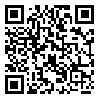Background and Aim: Clinical laboratories, due to their succeptibility to potential risks, are priorities in all activities concerning safety issues in hospitals.
Total Quality Management (TQM) is a model considered by WHO for clinical laboratories safety development. This study aimed to assess how safety standards were followed at the clinical laboratories of hospitals affiliated with Tehran University of Medical Sciences (TUMS) based on TQM safety regulations.
Materials and Methods: This descriptive study was conducted on a research population including TUMS hospitals clinical laboratories in 2012. For data collection, census was applied and sampling was not considered. The data gathering instrument was a checklist measuring seven safety components based on TQM. The validity of the instrument was determined through content validation, and Cronbach alpha was calculated to be 0.82. For the analysis of the results, descriptive statistics including frequency percentage of scores was employed.
Results: The safety of research population turned out to be suitable in terms of four factors: designing, existence of general safety items, conducting standard safety activities, and safe disposal of laboratory wastes. Besides, implementation of safety programs and increase in employees’ knowledge to cope with accidents were relatively acceptable. The emergency evacuation program, however, was estimated as poor.
Conclusion: The studied laboratories enjoy relatively safe conditions, but imperfect implementation of safety protocols can endanger safety conditions. Therefore, it is necessary to take the required correcting measures to ensure full safety in clinical labs.
| Rights and permissions | |
 |
This work is licensed under a Creative Commons Attribution-NonCommercial 4.0 International License. |


